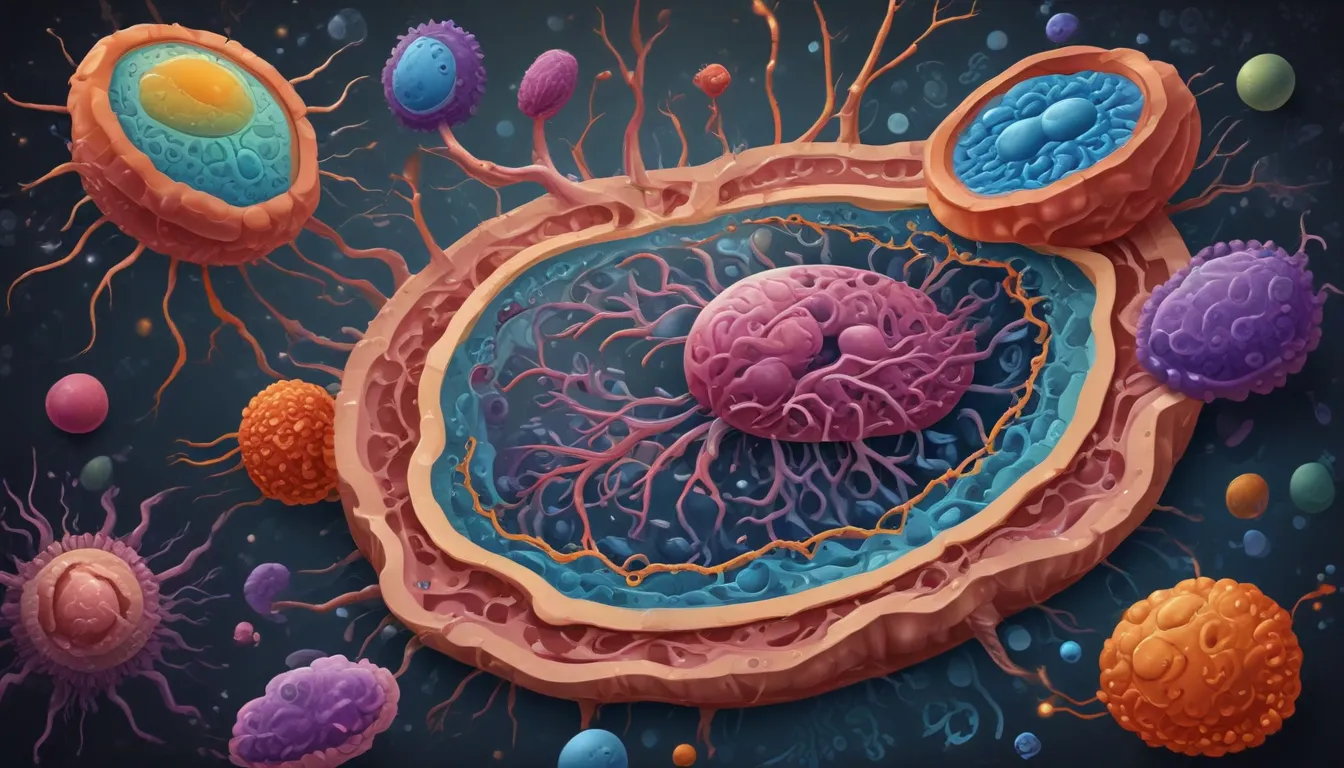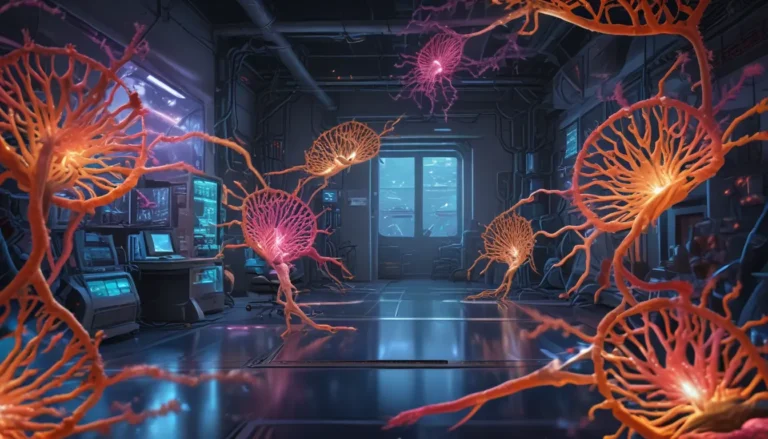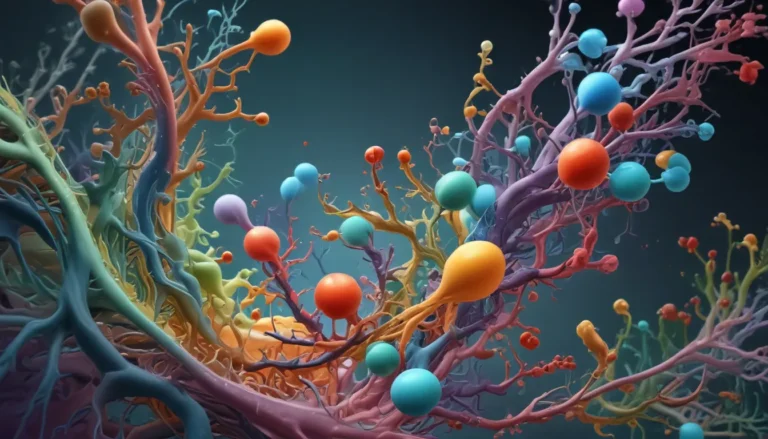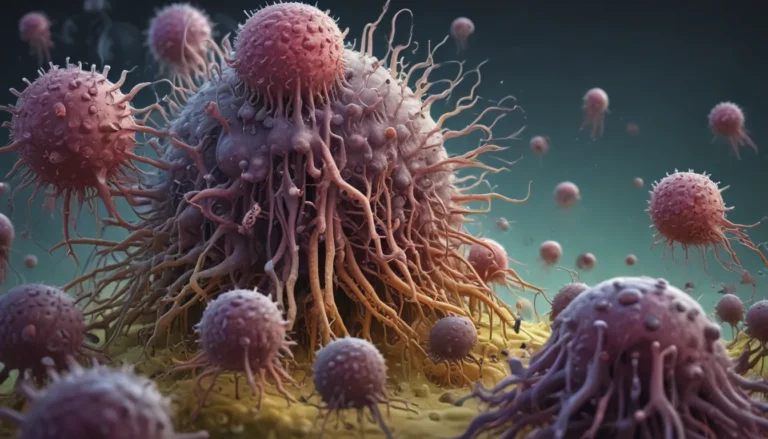A Note About Images: The images used in our articles are for illustration purposes only and may not exactly match the content. They are meant to engage readers, but the text should be relied upon for accurate information.
Eukaryotic cells, the foundation of life in all living organisms within the Eukarya domain, are a marvel of evolution. From single-celled protists to complex plants and animals, these cells exhibit a level of complexity that is essential for the existence of life as we know it. Let’s delve into the world of eukaryotic cells and uncover ten astounding facts that highlight their significance and intricacies.
Unveiling the Remarkable Eukaryotic Cell
Eukaryotic cells are the cornerstone of life, functioning as the basic unit of all organisms within the Eukarya domain. With their membrane-bound nucleus housing genetic material, these cells are equipped with the necessary components to regulate cellular activities and drive essential functions.
The Membrane-Bound Nucleus: A Control Center
Unlike prokaryotic cells, eukaryotic cells boast a unique feature – a distinct membrane-bound nucleus. This nucleus serves as the control center of the cell, orchestrating vital functions and ensuring proper coordination of cellular activities.
Powering the Cell: The Mighty Mitochondria
Mitochondria, the powerhouses of eukaryotic cells, are responsible for energy production through cellular respiration. These organelles generate ATP, the energy currency that fuels various cellular processes and activities.
Diversity in Unity: Unicellular and Multicellular Eukaryotes
Eukaryotic organisms exhibit diversity in their structural organization, ranging from unicellular entities like amoebas to complex multicellular organisms with specialized cells and tissues working in harmony.
Exploring Organelles: Specialized Structures Within Cells
Eukaryotic cells contain a diverse array of organelles, each with specific functions essential for cellular activities. From the endoplasmic reticulum to the Golgi apparatus and lysosomes, these structures play crucial roles in maintaining cell function.
Cellular Harmony: Communication Among Cells
Communication is vital for multicellular organisms, and eukaryotic cells achieve this through chemical signaling pathways. This intricate communication network ensures proper coordination and response to external stimuli, fostering cellular harmony.
The Support System: Dynamic Cytoskeleton
The cytoskeleton, a network of protein filaments within the cytoplasm, provides structural support, aids in cell movement, and facilitates intracellular transport. This dynamic network is essential for maintaining cell shape and function.
Reproduction and Growth: The Miracle of Mitosis
Eukaryotic cells undergo mitosis, a process of cell division that ensures the equal distribution of genetic material between two daughter cells. This mechanism supports cell growth, tissue repair, and the development of multicellular organisms.
Cellular Engulfment: Endocytosis in Eukaryotic Cells
Some eukaryotic cells possess the remarkable ability to engulf other cells or particles through endocytosis. This process allows cells to acquire nutrients and eliminate waste, showcasing the versatility and adaptability of eukaryotic cells.
A World of Possibilities: Eukaryotic Cells in Complex Organisms
Eukaryotic cells play a critical role in enabling the existence of complex organisms by providing the necessary structural foundation, chemical processes, and genetic information for life to thrive in diverse environments.
In conclusion, the world of eukaryotic cells is a fascinating realm that continues to captivate researchers and enthusiasts alike. As we unravel the mysteries of these intricate structures, we gain deeper insights into the fundamental processes that drive life on Earth. By studying eukaryotic cells, we pave the way for advancements in various fields, offering new opportunities for scientific discoveries and innovations.
FAQs: Unlocking the Secrets of Eukaryotic Cells
-
What is a eukaryotic cell?
A eukaryotic cell is a type of cell that contains a true nucleus and membrane-bound organelles. These cells are found in plants, animals, fungi, and protists, exhibiting a higher level of complexity compared to prokaryotic cells. -
What are examples of eukaryotic cells?
Eukaryotic cells include animal cells, plant cells, fungal cells, and protist cells, each with distinct characteristics and functions essential for their respective organisms. -
How do eukaryotic cells differ from prokaryotic cells?
Eukaryotic cells possess a true nucleus and membrane-bound organelles, in contrast to prokaryotic cells that lack these structures. Eukaryotic cells are larger, more complex, and capable of undergoing mitosis for replication. -
Why study eukaryotic cells?
Studying eukaryotic cells is crucial for understanding the fundamental processes underlying life. It provides insights into genetics, cellular functions, evolution, and disease mechanisms, driving advancements in various scientific fields.
Embark on a journey of discovery into the intricate world of eukaryotic cells, from the mysteries of the endosymbiotic theory to the essential processes of the electron transport chain and the vital role of the endoplasmic reticulum. Explore the endless possibilities that stem from understanding the complexities of cellular biology, and witness the profound impact it has on scientific knowledge and the world around us.






